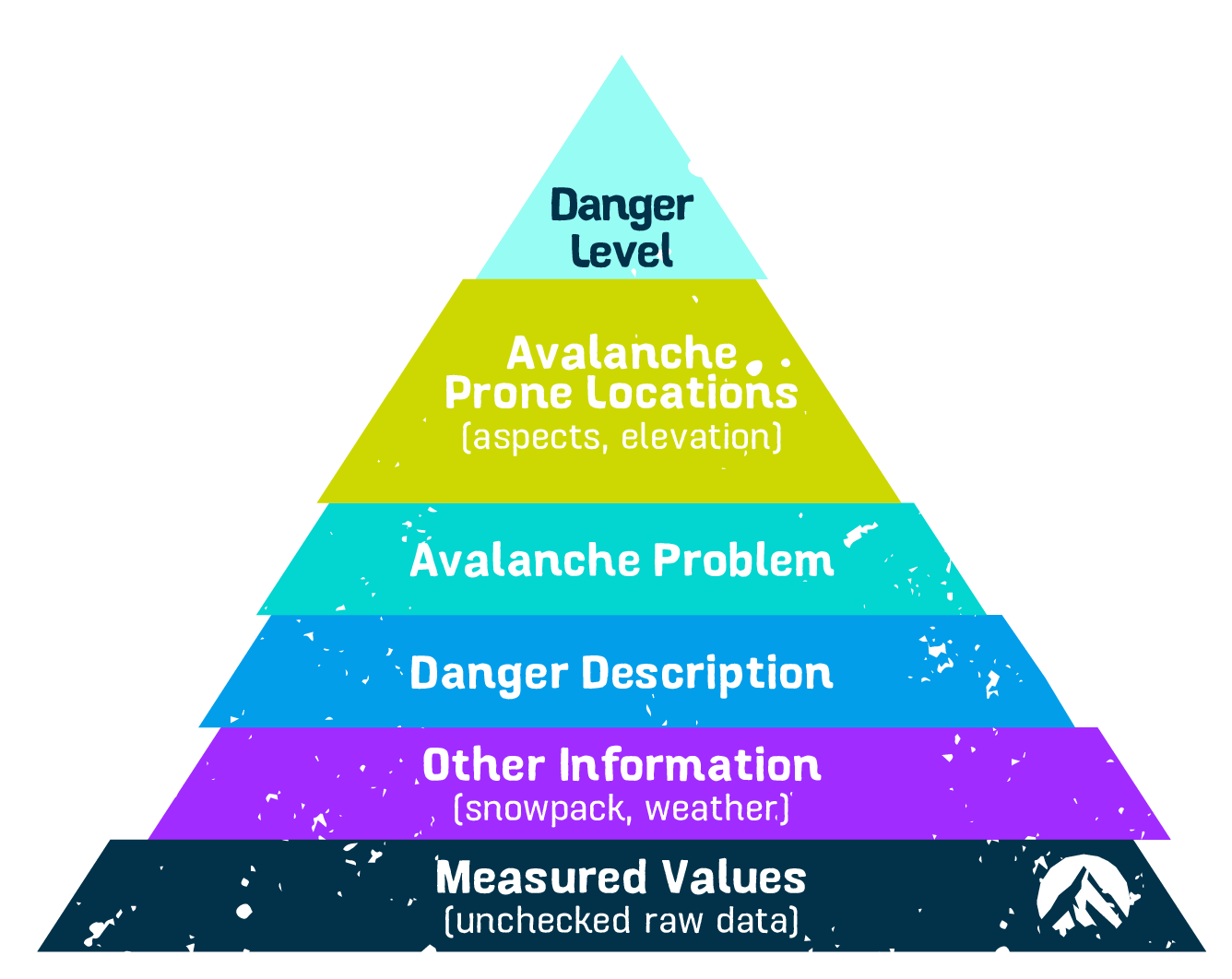

Unless your riding takes you to the most extreme frontiers of the FreeRide universe, there’s almost always a daily (sometimes twice daily) avalanche bulletin to refer to.
While the look and feel of these may differ from country to country, avalanche reports tend to follow an internationally recognised information pyramid. At the top of the pyramid, you’ll see the avalanche danger level for the day. This is proceeded by successive layers of information ranked in order of relevance and importance, concluding with the raw, uninterpreted data at the base.

In summary, the avalanche bulletin is your foundation for a safe day on the hill. When combined with the weather forecast, a good plan and the right gear it can be the difference between a great day and a disaster.
Explore the themes below to find the best home for the content you want to learn about: